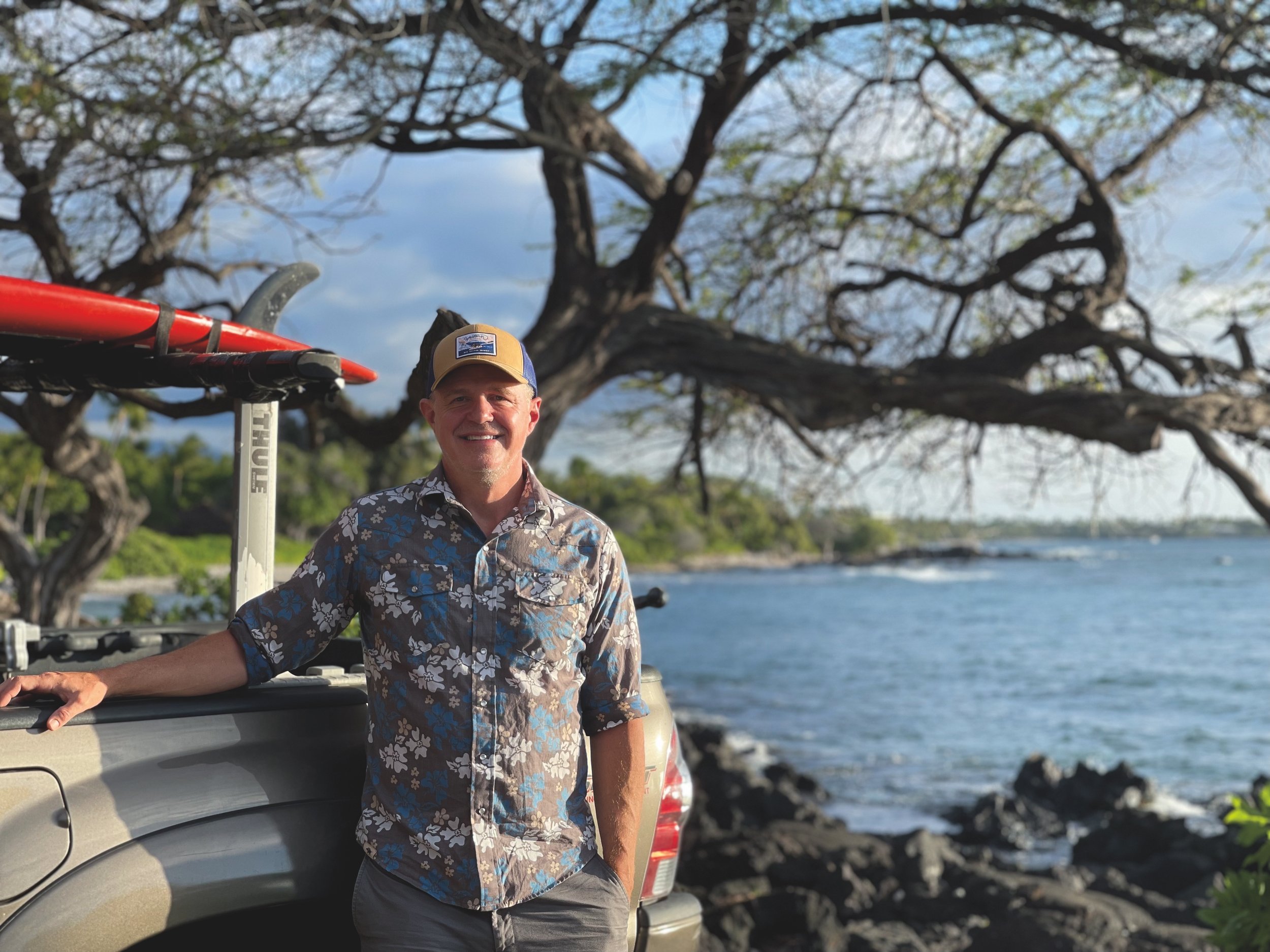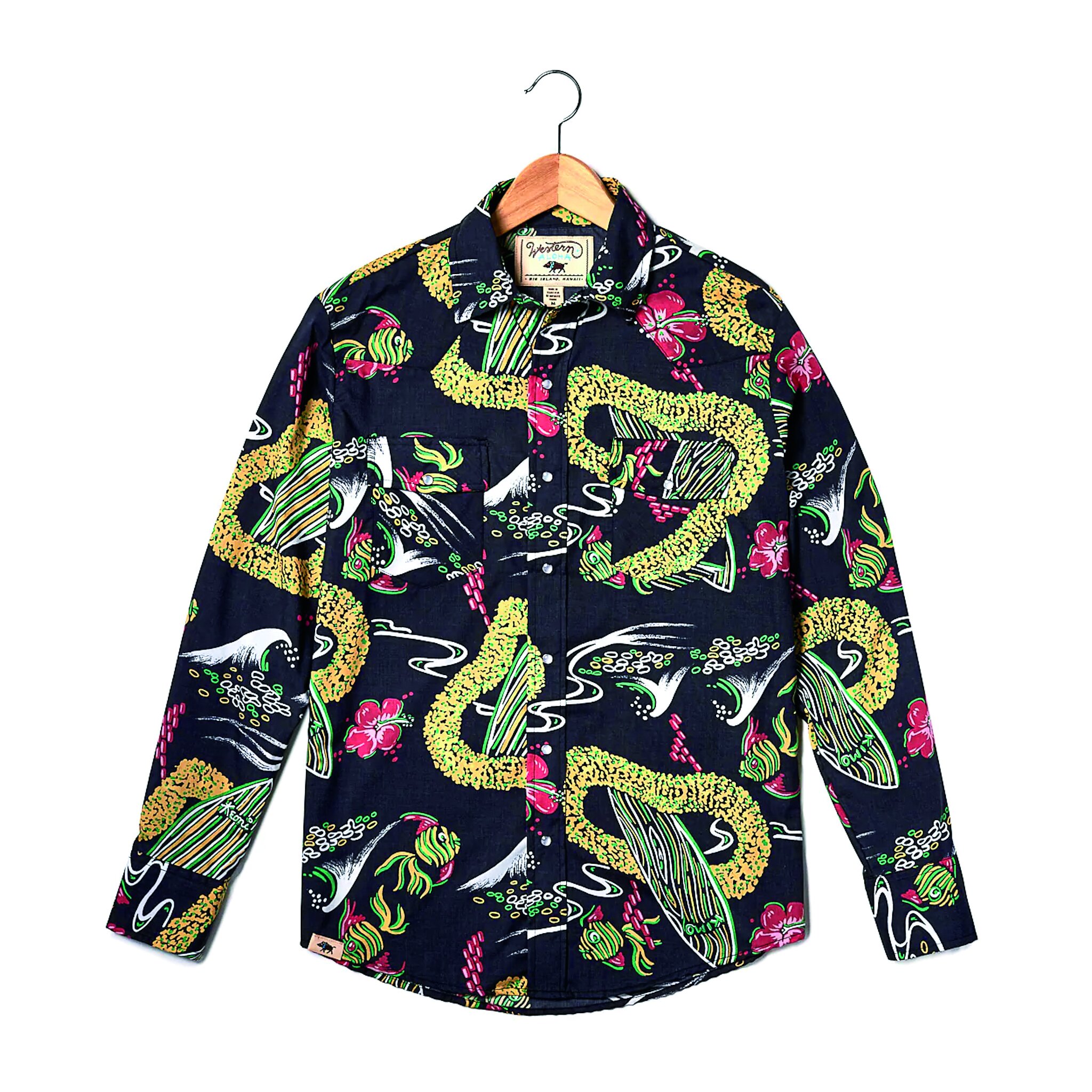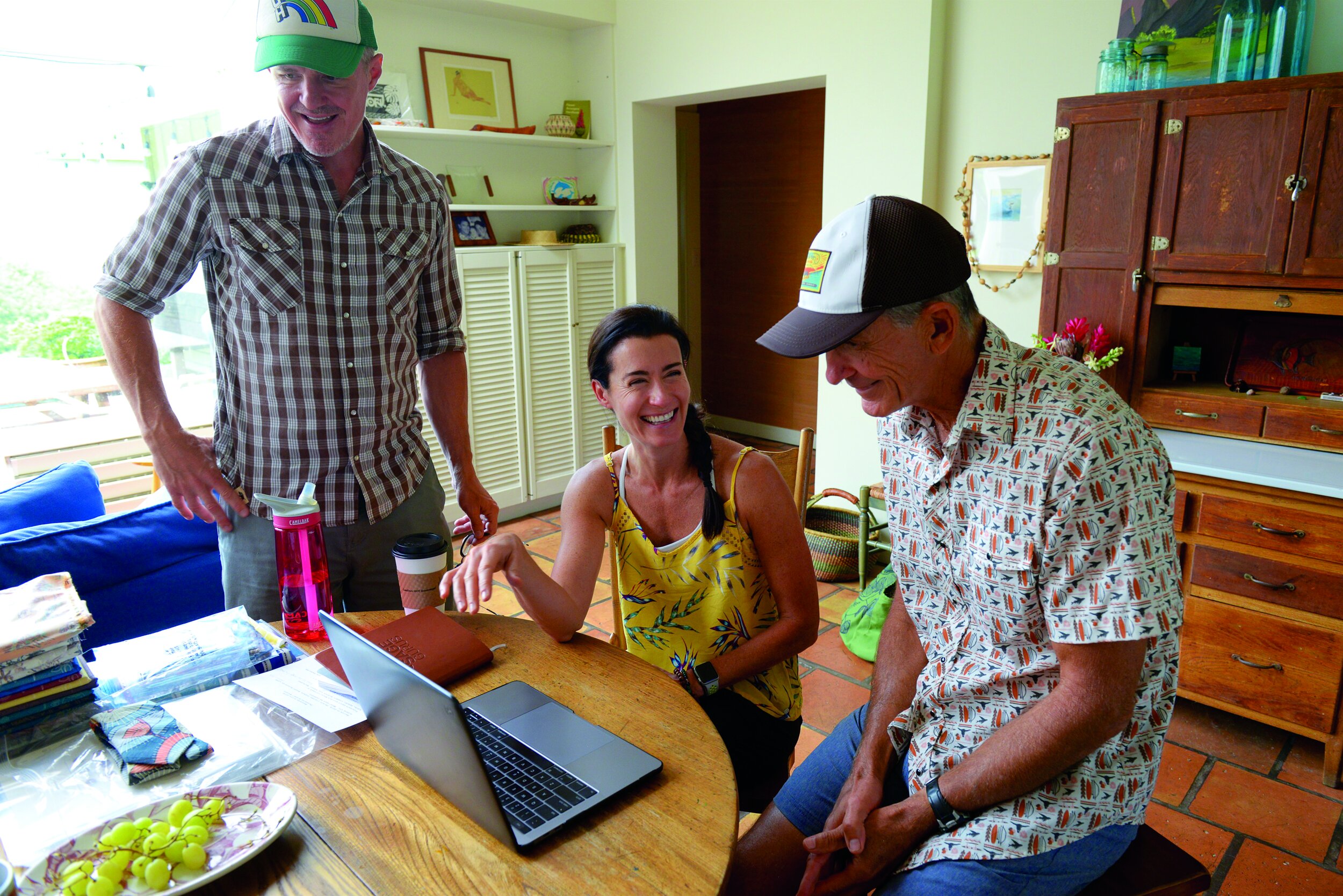How the West was Worn




Paul Sullivan doesn’t have a problem with tacky aloha shirts. It’s those without any character that really bother him.
“Who am I to say your aloha shirt is tacky? If you like it, then rock that tacky aloha shirt,” he insists with a chuckle.
“I get more bummed out when I see ones that just aren’t inspired and don’t have any real character,” Sullivan continues. “If it’s just a palm tree or something, where it’s clear the design behind the shirt really doesn’t say anything about Hawai‘i. … I get more bummed out by generic shirts than tacky shirts.”
Sullivan grew up in Maryland horse country, and as a teenager, he often wore western shirts that featured a more close-fitting style, shoulder yokes, two front pockets with flaps and snaps.
“All of those elements are functional,” Sullivan said of western shirts. “It’s got the yokes to protect your shoulders. It’s got the pocket flaps to keep stuff in your pockets — if you’re a cowboy and you’re bending over. It’s got the snaps because cowboys don’t like to sew, so they had snaps instead of buttons that might tear off. And it’s more closely fitting, so it won’t snag on barbed wire or a bush when you’re out on the range.”
Attracted initially by the wintertime residency of humpback whales and molten lava, Sullivan first visited Hawai‘i Island in 1993. He got a job driving a truck for a plant nursery in Kona during the day, and he waited tables at night. On the crew team in college, Sullivan was also passionate about rowing and time on the water, so he started paddling often for an outrigger canoe club in Kona, too.
“Then I ended up on one weekend driving my little truck up to Waimea, and I was just completely blown away,” Sullivan recalls. “There were cattle ranches, a rodeo. There’s country music on the radio. There are people in cowboy hats and cowboy boots and people in western shirts. … I just thought it was the most beautiful place I’ve seen, and I said, ‘I think I could live here someday.’”
Making that dream a reality took a little time. Sullivan moved back to the mainland, went to law school, practiced commercial litigation for a while at big law firms in New York City and Washington, D.C., but his goal of returning to Hawai‘i Island and living in Waimea never faded.
In 2012, Sullivan did move back, planning to work in the community as an attorney. He passed the Hawai‘i State Bar but soon found himself thinking frequently about how he might make a living that required a bit more creativity.
“I was wearing western shirts and wearing aloha shirts,” Sullivan recalled. “And it occurred to me, ‘Oh, I would love that — a western aloha shirt.’ I’d love to wear a combination of the two.”
A few years of intensive research and trial and error followed, and Sullivan later reached out to Dale Hope, the author of The Aloha Shirt coffee table book and a longtime authority on the celebrated garment.
“Dale and I became friends, and his first reaction was, ‘Don’t do it. It’s way too hard, way too many risks,’” Sullivan recalls with a laugh. “But I really wanted to do it, so I didn’t listen.”
Western Aloha officially launched in 2018, and today, Hope is the company’s art director. The brand sells much of its clothing online, but its distinctive shirts are also featured at a number of resorts across the Hawaiian Islands as well as several specialty retailers on the mainland. And although the fabric is made in South Korea and the shirts are sewn in El Paso, Texas, Sullivan insists each Western Aloha shirt tells an authentic Hawai‘i story.
“They need to be something people look at and it puts a smile on their face and a good feeling in their heart,” Sullivan says. “It’s very easy to make a tacky aloha shirt, but I think the way around that is to make a shirt that has a real story to it and has some clear inspiration and is well executed by a true artist.”
Describing himself as a “recovering lawyer” today, Sullivan lives in Waimea, and he says he happily relies on the local community there to make sure Western Aloha’s products remain authentic and true to this place.
“They’ll tell you if they don’t like it,” he said, chuckling again. “Hawai‘i people will definitely let you know if they don’t think you’re doing something that is really expressing things the right way.”
